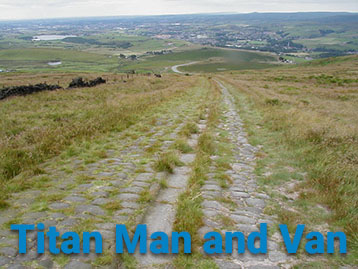
A settlement does not just appear on the map. Granted settlers might choose some arbitrary location to set up shop, sort to speak, but their endeavor is doomed to end in disaster if careful considerations have not been made in advance. Migrating people seek out favorable conditions in the places they want to live in: river banks, shores, open fields, river crossings, bridges, so they would have a way to feed themselves either directly or by trade. While such places might be abandoned over time, the quality of the location doesn’t change and in fact newcomers benefit from the buildings that are already there.
This is the most common way that modern day cities have originated: reclaiming a previously deserted settlement from an older civilization (or forcing them out of it) and then expanding around the place of origin. When you want to live in some place that was previously inhabited, chances are someone before you tried to “tame” the location as well.
Ave alteratio
What I wanted to illustrate is not so much how cities are formed but rather our tendency to “salvage” whatever we can from those that came before us.
We have come to view ancient Rome, as this distant, rigid and shunning all change empire. While this might be true when we discuss the final years of the great nation, things were quite different for the majority its existence. One of the reason Rome became one of the most powerful empires to ever exist was its willingness to change its doctrines, whenever they came across something useful, they employed it themselves, should something become burdensome – they disposed of it, and most importantly they tried constantly to improve what they already had.
Of roads and men
 It’s quite hard to think of something as unassuming as a road to have the power to lead a nation to greatness, however this is very much true even today. When you think about it however it makes plenty of sense. When you control territories larger than a hamlet there must be a way to reach distant parts of them quickly, lest they become isolated. Trekking trough forests, marshes and mountains is not going to cut it and one would assume it would be rather detrimental to trading.
It’s quite hard to think of something as unassuming as a road to have the power to lead a nation to greatness, however this is very much true even today. When you think about it however it makes plenty of sense. When you control territories larger than a hamlet there must be a way to reach distant parts of them quickly, lest they become isolated. Trekking trough forests, marshes and mountains is not going to cut it and one would assume it would be rather detrimental to trading.
This is the reason why the Romans chose to create their road system, which we use even today. They chose the best possible way to navigate difficult terrain for the shortest possible time, altering the surroundings if necessary. Examples of these roads can be found all over Europe. From the original provinces in the Italian Peninsula such as the Via Flamina, located in the outskirts of Rome, to the far reaches of the empire, such as the road underneath Kilburn High Road railway station, located in Kilburn, London.
The infrastructure of almost all European countries necessarily overlaps with the roman routes, which have existed for millennia, since the Roman people have conveniently provided us with usable roads, which need little alteration to be usable by modern vehicles.
